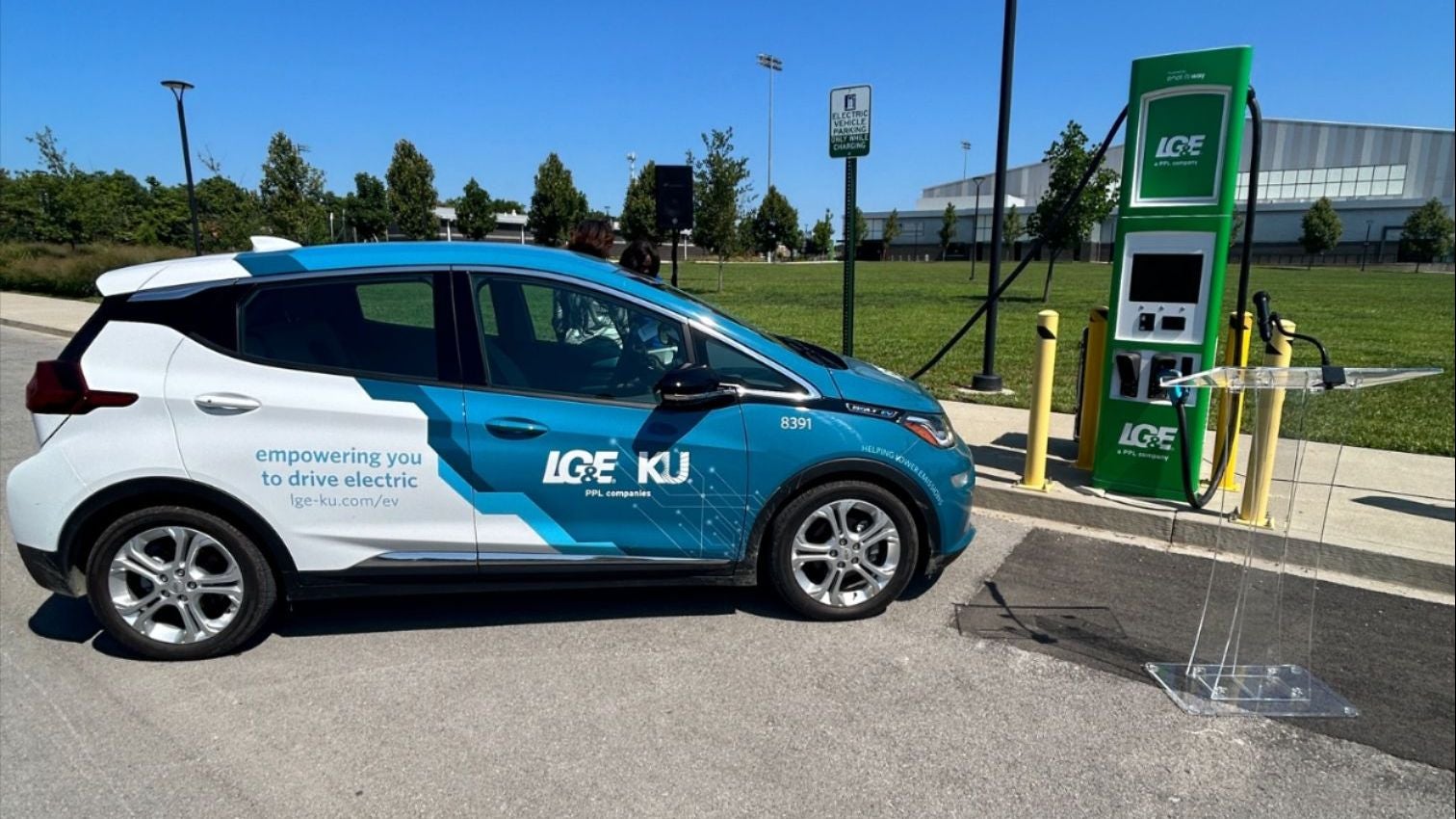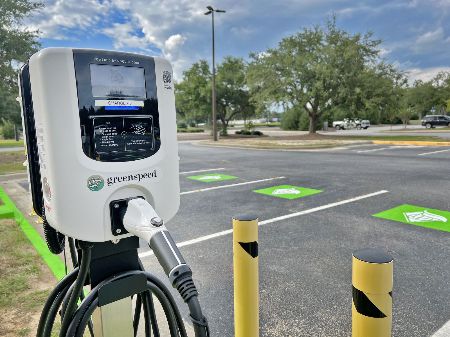The Most Reliable Sources to Buy EV Charging news and Stay Informed
The Most Reliable Sources to Buy EV Charging news and Stay Informed
Blog Article
Leading EV Charging Information: Secret Updates on Facilities and Technology

Recent Developments in Fast-Charging Innovation

Moreover, advancements in battery modern technology, including enhanced thermal monitoring systems and higher energy thickness batteries, enhance fast-charging abilities. These growths mitigate the danger of battery destruction during fast charging, ensuring durability and efficiency for EV proprietors.
Additionally, the combination of wise billing options is enhancing user experience, allowing real-time surveillance and vibrant pricing models. EV Charging news. This versatility allows chauffeurs to enhance billing costs and times based on grid demand
As car manufacturers proceed to buy fast-charging networks, the collaboration between industry stakeholders is vital. Collaborations in between charging station suppliers and auto manufacturers are paving the way for comprehensive protection, ultimately promoting a much more robust EV community. These improvements are essential in sustaining the shift to lasting transportation.
Federal Government Campaigns for Billing Development
Federal government efforts play an important duty in the development of electrical car (EV) charging infrastructure, facilitating the transition to sustainable transport. Numerous government and state programs are being executed to enhance charging access, minimize the financial concern on customers, and advertise the fostering of electric vehicles.
Significantly, the U.S. government has allocated considerable financing via the Facilities Investment and Jobs Act, which earmarks $7.5 billion for EV billing network advancement throughout the country. This financing is focused on deploying hundreds of new charging terminals, particularly in underserved locations, therefore attending to array anxiousness among possible EV purchasers.
Additionally, countless states are establishing legislation to simplify the permitting procedure for charging terminal installations, which is critical for speeding up deployment. Rewards such as tax credit ratings and discounts for both consumers and services are additionally being introduced to motivate the installation of charging framework.
Additionally, public-private collaborations are increasingly coming to be a focus, leveraging exclusive investment to match federal government financing. These initiatives highlight a joint method crucial for building a efficient and detailed EV billing network, eventually adding to a greener and more sustainable future.
Ingenious Battery Solutions Enhancing Performance
Revolutionizing the landscape of electric automobile (EV) innovation, cutting-edge battery solutions are considerably improving performance and efficiency. Advances in battery chemistry, particularly with lithium-sulfur and solid-state batteries, are leading to boosted power thickness, which permits for longer ranges and faster charging times. These new battery types have the possible to surpass typical lithium-ion batteries by offering higher capacities while reducing weight, thus enhancing total automobile performance.
In addition, growths in battery monitoring systems (BMS) are maximizing power use and extending battery lifespan. Intelligent formulas monitor battery health and efficiency, making it possible for real-time changes to billing and discharging processes. This not only check my reference boosts the performance of the battery however also ensures an extra reliable and lasting energy source for EVs.
Additionally, the integration of reusing modern technologies is attending to the environmental impact of battery manufacturing and disposal. Advancements in second-life applications for EV batteries are promoting their use in energy storage Source space systems, adding to a round economic situation.
As these ingenious battery remedies proceed to progress, they assure to change the EV market, making electric cars more available and attractive to a broader target market while supporting international sustainability goals.

Cooperation In Between Automakers and Billing Networks
Identifying the critical need for a robust billing infrastructure, car manufacturers are increasingly collaborating with charging network service providers to enhance the EV ownership experience (EV Charging news). These collaborations aim to produce a seamless charging ecosystem that profits customers and sustains the shift to electric automobiles
Significant vehicle brands are joining pressures with well-known billing networks to broaden their charging station coverage, ensuring drivers have accessibility to reputable and convenient billing options. For example, collaborations with networks like ChargePoint and Electrify America enable automakers to incorporate charging services straight into their lorries' navigating systems, leading customers to the local stations and providing real-time schedule updates.
In addition, these partnerships frequently cause the development of fast-charging technologies that substantially decrease the moment needed to charge an EV. By merging resources and expertise, automakers and billing networks can introduce much faster, developing remedies that fulfill the growing demand for electrical movement.
On top of that, joint initiatives may additionally lead to more standard billing protocols, which can ease consumer confusion and promote more comprehensive EV adoption. In general, these critical partnerships are pivotal in developing a reliable and user-friendly billing infrastructure that meets the needs of an increasing electric car market.
Difficulties Dealing With EV Billing Framework
As the electrical vehicle market remains to expand, numerous challenges are surfacing that hinder the advancement of a detailed billing framework. Among the main challenges is the inadequate variety of billing terminals, especially in country and underserved metropolitan areas. This gap produces variety stress and anxiety amongst prospective EV purchasers, preventing them from making the switch.
In addition, the lack of standardization accountable modern technology complicates the facilities landscape. Variations in plug types and charging rates can develop complication for customers and boost operational complexities for charging network drivers. The integration of billing stations into existing electric grids presents considerable challenges. Many areas deal with capacity constraints, requiring substantial financial investments in grid upgrades to fit enhanced demand.
One more pressing concern is the high cost related to the setup and maintenance of charging terminals, which can be a barrier for both public entities and exclusive services. Regulatory obstacles and zoning restrictions can delay the release of charging facilities, impeding development in broadening vital solutions. Dealing with these obstacles will be important for cultivating a robust EV environment that sustains the transition to sustainable transport.
Conclusion
Finally, the continuous innovations in EV billing innovation, sustained by considerable federal government campaigns and cutting-edge battery solutions, are essential for the growth and effectiveness of electric car infrastructure. Collaborations between automakers and charging companies additionally boost terminal coverage, dealing with the growing demand for accessible charging alternatives. Regardless of obstacles that continue within the EV charging landscape, these advancements signify a favorable trajectory in the direction of a much more sustainable and efficient electrical automobile community.
Technologies in billing facilities have led to the development of ultra-fast battery chargers qualified of providing up to 350 kW of power, significantly reducing billing times. Variations in plug types and billing speeds can create complication for individuals and increase see it here functional complexities for charging network operators.In verdict, the recurring developments in EV charging modern technology, supported by substantial federal government initiatives and cutting-edge battery solutions, are crucial for the development and effectiveness of electrical automobile infrastructure. Cooperations between car manufacturers and charging carriers better improve terminal protection, addressing the growing need for available billing options. Regardless of challenges that continue within the EV charging landscape, these advancements indicate a positive trajectory in the direction of a more efficient and sustainable electrical vehicle environment.
Report this page